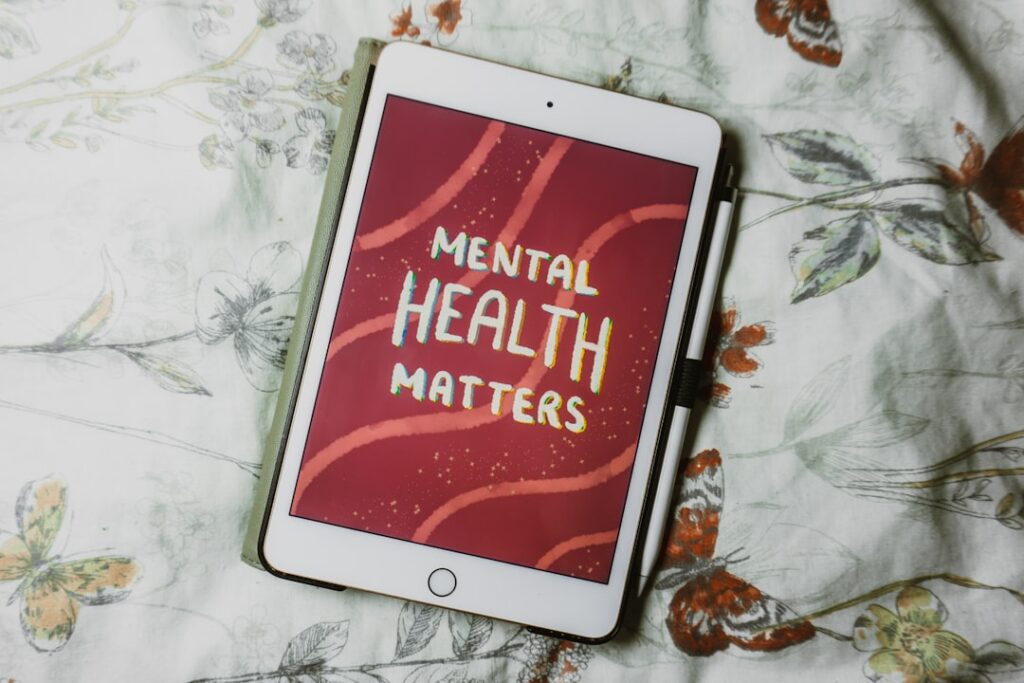Why Understanding Mental Health Matters More Than Ever
When you define mental health, you’re looking at much more than just the absence of mental illness. Mental health encompasses your emotional, psychological, and social well-being – affecting how you think, feel, act, handle stress, relate to others, and make choices throughout your life.
Quick Definition:
– Emotional well-being: Managing feelings and maintaining life satisfaction
– Psychological well-being: Clear thinking, self-acceptance, and personal growth
– Social well-being: Building healthy relationships and contributing to your community
– Overall function: Coping with normal stress, working productively, and realizing your potential
Mental health exists on a continuum. You can have good mental health while managing a diagnosed condition, or experience poor mental well-being without having a mental illness.
Nearly 1 in 5 adults experience mental health problems each year, yet many don’t understand what mental health actually means. This confusion creates stigma and prevents people from getting help.
Your mental health influences everything – from your physical health and relationships to your ability to pursue goals and handle daily challenges. It’s a fundamental part of your overall wellness.
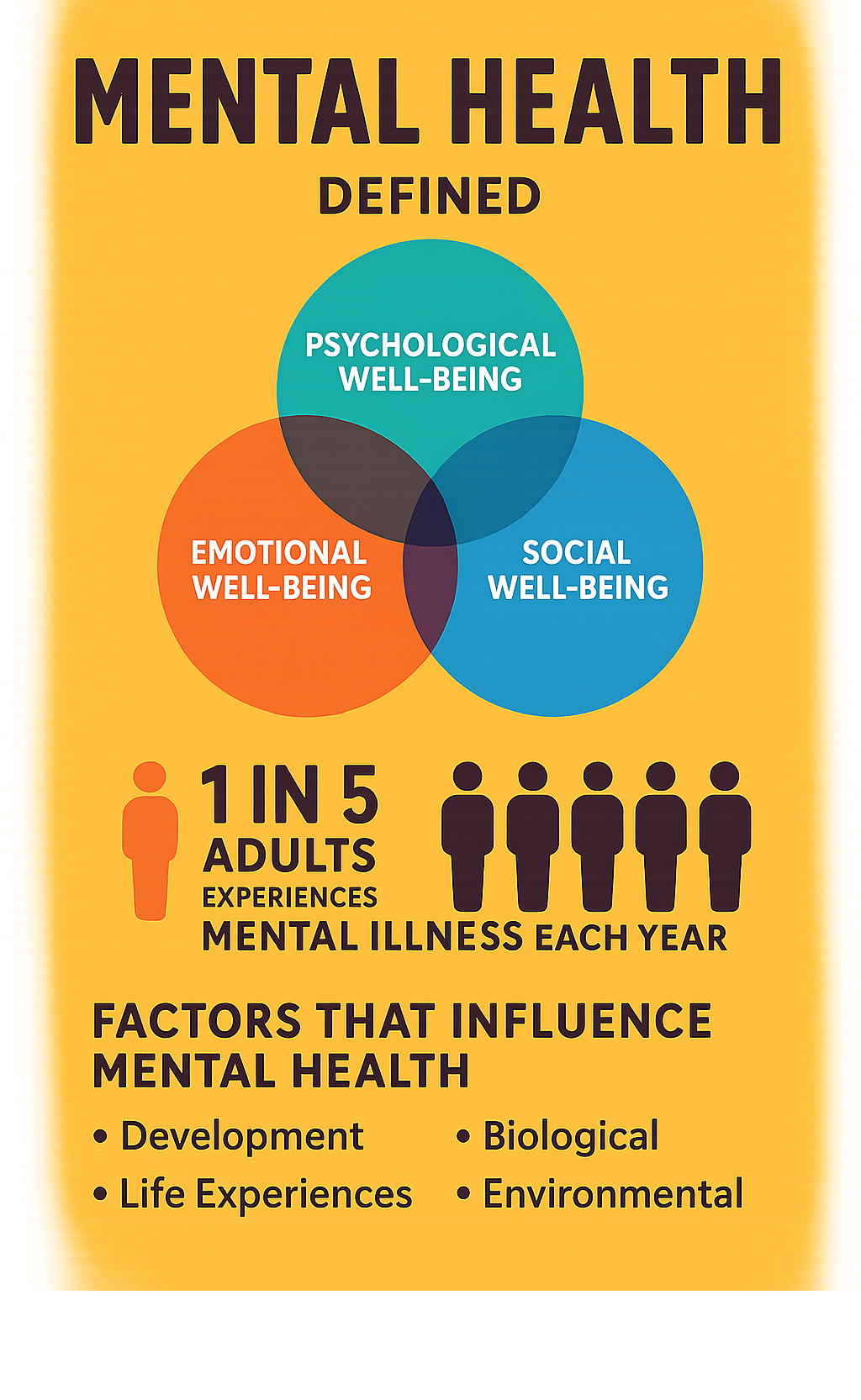
Quick define mental health terms:
– wellness and self care
– simple self care for therapists
– why is it important
Define Mental Health: What It Really Means
When you ask experts to define mental health, they focus on thriving, not just surviving. The World Health Organization describes it as “a state of mental well-being that enables people to cope with the stresses of life, realize their abilities, learn well and work well, and contribute to their community.”
The APA Dictionary of Psychology takes a similar approach, describing it as “a state of mind characterized by emotional well-being, good behavioral adjustment, relative freedom from anxiety and disabling symptoms, and a capacity to establish constructive relationships and cope with the ordinary demands and stresses of life.”
These definitions shift the conversation from what’s wrong to what’s possible when your mental health is strong.
When you define mental health properly, you’re looking at your ability to experience well-being and flourishing in daily life. Your functionality matters – can you handle daily responsibilities without feeling overwhelmed? Productivity means contributing meaningfully to your work and community. Community contribution helps you feel connected and motivated to give back. Resilience is your ability to bounce back from life’s challenges.
Mental health is recognized as a fundamental human right – essential for personal growth, community connection, and your ability to shape your own life.
Define Mental Health vs. Mental Illness
Many people think mental health and mental illness are complete opposites, but that’s not quite right.
Mental health is your overall emotional, psychological, and social well-being – your mental fitness level.
Mental illness refers to specific diagnosable conditions that significantly interfere with your thinking, mood, or behavior – conditions like anxiety disorders, depression, bipolar disorder, PTSD, and eating disorders.
Here’s the key insight: You can have good mental health while managing a diagnosed mental illness. With proper treatment and support, many people with mental health conditions live fulfilling lives.
The flip side is also true. You might not have any diagnosed mental illness but still struggle with poor mental well-being due to stress, life changes, or other challenges.
Understanding that mental health exists on a continuum helps reduce stigma and encourages everyone to focus on their overall wellness, regardless of diagnosis.
Core Dimensions of Mental Health
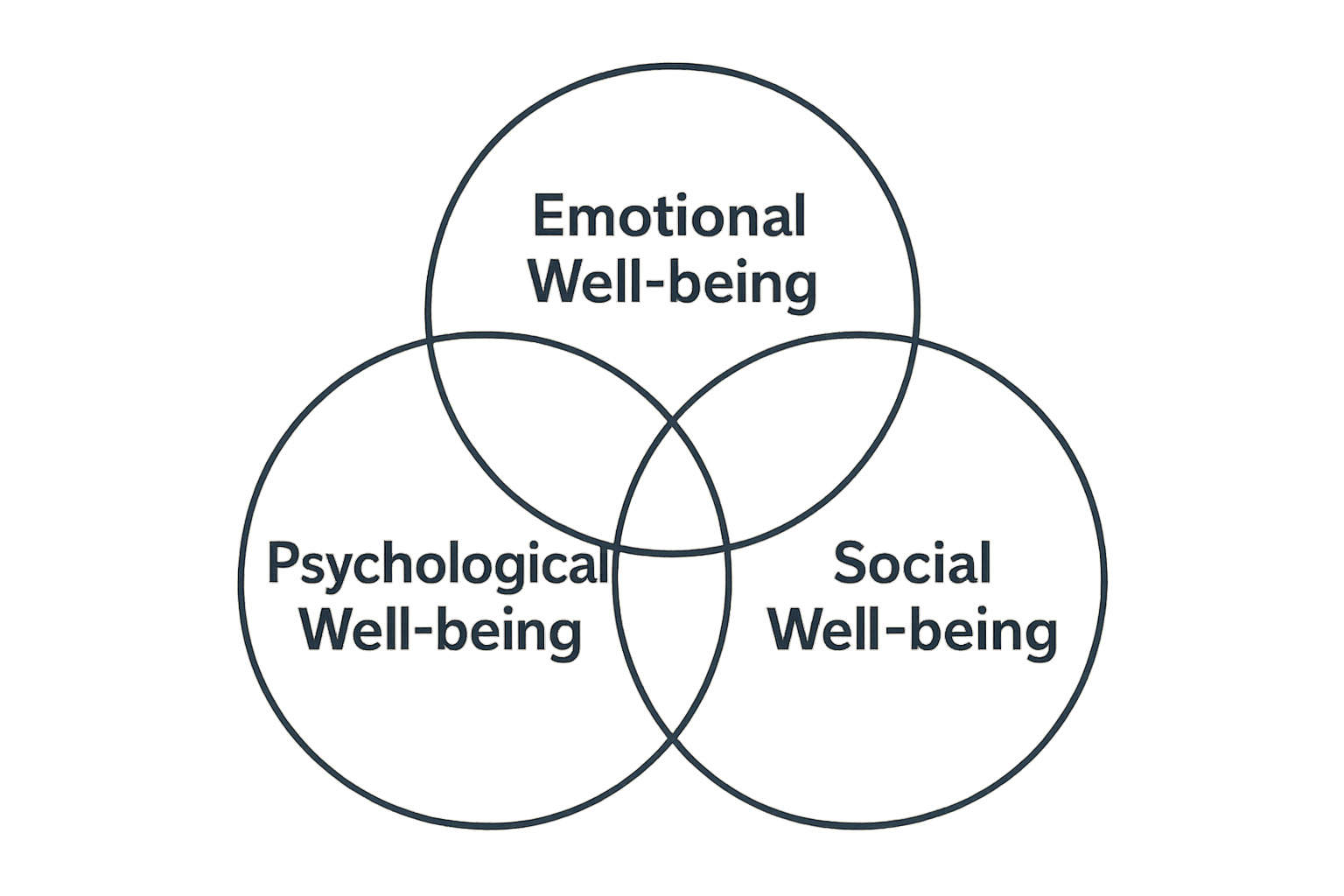
When we define mental health in its fullest sense, we’re looking at how your emotional, psychological, and social well-being work together. Think of it like a three-legged stool – if one leg is wobbly, the whole thing becomes unstable.
Your emotional well-being is about how you handle feelings day to day. It shows up when you can recognize frustration after a tough meeting, express that emotion healthily, and bounce back without carrying it forward. This includes experiencing joy, maintaining confidence during challenges, and finding meaning in daily activities. It’s also about developing resilience to cope with life’s curveballs.
Your psychological well-being involves how your mind processes information and handles cognitive tasks. When strong, you can concentrate on important tasks, think through problems clearly, and adapt when plans change. This includes having a realistic self-view, setting challenging but achievable goals, learning from experiences, and maintaining mental flexibility.
Your social well-being encompasses how you connect with others and your community. This looks like having close friends for support, feeling comfortable with new people, and contributing to causes you care about. Strong social well-being means you can both give and receive support naturally, feel like you belong, and communicate needs and boundaries clearly.
Define Mental Health in Emotional, Psychological & Social Terms
Strong emotional well-being means naming specific feelings instead of just saying “I’m stressed.” You express emotions appropriately and develop life satisfaction – that underlying contentment and sense of purpose.
Strong psychological well-being shows up in focused thought patterns and clear decision-making. You break problems into manageable steps, adapt to changes with curiosity, practice self-acceptance, and see challenges as learning opportunities.
Your social well-being becomes evident in authentic relationships and effective communication. You maintain close connections, work through conflicts constructively, and feel connected to something bigger through community contribution.
The beautiful thing is seeing how these dimensions support each other, creating positive cycles of well-being.
The Mental Health Continuum & Its Determinants
When we define mental health accurately, we recognize it’s not a simple yes-or-no question. Your mental well-being shifts along a continuum throughout your life.
Picture this continuum from flourishing (high well-being and strong coping skills) to managing (generally doing well with some challenges), to struggling (noticeable difficulties affecting daily life), to crisis (significant impairment requiring immediate support).
The statistics remind us how serious this can become: an estimated 727,000 people died by suicide in 2021, with suicide being the third leading cause of death among 15-29-year-olds globally.
Your position on this continuum isn’t fixed – you can move in either direction based on life circumstances, support, and wellness choices.
What determines your position involves biological factors like genetics, life experiences including trauma, and environmental factors such as socioeconomic status and community support. Research from workplace mental health studies shows even work environments significantly impact mental well-being.
| Risk Factors | Protective Factors |
|---|---|
| Poverty and financial stress | Strong social support networks |
| Trauma and adverse childhood experiences | Sense of purpose and meaning |
| Discrimination and social isolation | Safe, stable housing |
| Chronic physical illness | Access to education and healthcare |
| Substance abuse | Regular physical activity |
| Family history of mental illness | Healthy coping skills |
| Major life transitions or losses | Cultural or spiritual connections |
Risk & Protective Factors that Define Mental Health Status
Risk factors pull you toward struggling, while protective factors help keep you stable or moving toward flourishing.
Poverty and financial stress create chronic worry affecting every life aspect. Trauma and adverse childhood experiences shape how your brain responds to stress lifelong. Discrimination and social isolation remind us mental health connects deeply to how society treats us.
On the positive side, strong social support networks provide safety nets during difficult times. Sense of purpose and meaning provides direction and resilience. Safe, stable housing gives you a foundation, while access to education and healthcare opens doors and provides wellness tools.
Define Mental Health Across the Lifespan
Mental health needs change through life stages. Childhood (0-12) builds the foundation through emotional regulation and relationship skills. Adolescence (13-18) brings identity formation and peer relationship importance, with bullying and academic pressure creating significant stress.
Young adulthood (19-25) often sees first mental health condition appearances during major transitions. Adulthood (26-64) involves juggling multiple responsibilities and finding work-life balance. Older age (65+) brings retirement adjustments and health challenges, but also wisdom and perspective.
Understanding these patterns helps normalize that mental health challenges can emerge at any age.
Recognizing Good vs. Poor Mental Health
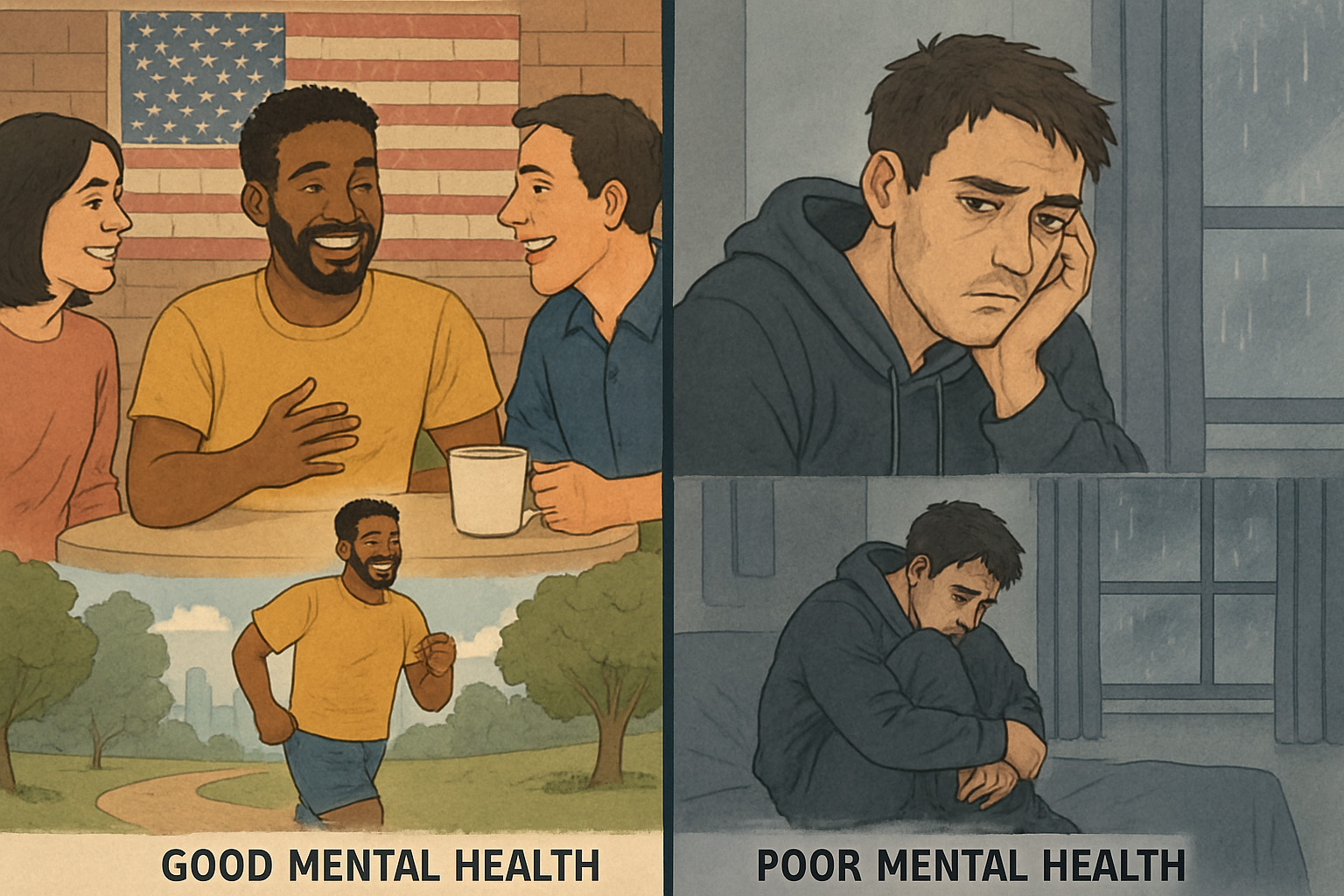
When you define mental health in practical terms, good mental health means you can handle life’s ups and downs without being completely derailed. It doesn’t mean constant happiness.
People with good mental health feel generally content, maintain meaningful relationships, adapt well to change, and feel productive and capable. They have energy for important things, sleep well, maintain healthy appetite, and feel hopeful about the future.
Poor mental health often shows as persistent sadness, anxiety, or irritability, difficulty concentrating, sleep pattern changes, appetite changes, losing interest in enjoyed activities, and withdrawing from social connections.
These effects extend beyond personal suffering, increasing physical health problems, straining relationships, and reducing productivity. In severe cases, untreated challenges can lead to self-harm or suicide.
For deeper understanding of mental health’s connection to overall wellness, check out mental health and wellness approaches.
Early Warning Signs & When to Seek Help
Your mind and body send warning signals before challenges become severe. Behavioral shifts include eating or sleeping changes, withdrawing from people and activities, no energy, or feeling like nothing matters.
Emotional changes feel like uncontrollable rollercoasters – severe mood swings, being unusually confused, worried, or scared, or feeling emotionally numb.
Physical signs include unexplained aches and pains, appetite or weight changes, persistent fatigue, and sleep disturbances. Cognitive changes show as concentration difficulties, memory problems, or inability to perform routine tasks.
If you or someone you know is thinking about self-harm, call 988 (the Suicide & Crisis Lifeline) immediately, or go to your nearest emergency room.
For non-emergency situations, your primary care provider is often the best starting point.
Common Misconceptions That Distort How We Define Mental Health
The idea that mental health problems are weakness is the most damaging myth. These conditions can affect anyone and often result from complex biological, psychological, and social factors unrelated to personal strength.
Another harmful myth is that you can “snap out of it” with positive thinking. While helpful, mental health conditions are real medical conditions often requiring professional treatment.
Many believe only certain types of people get mental health problems. Reality? They affect people of all backgrounds. Success or wealth don’t provide immunity.
The myth that mental health problems are permanent keeps people from seeking help. With proper treatment, most people recover and lead fulfilling lives.
Finally, seeking help doesn’t mean you’re “crazy” – it shows self-awareness and commitment to well-being.
How to Promote & Protect Your Mental Health
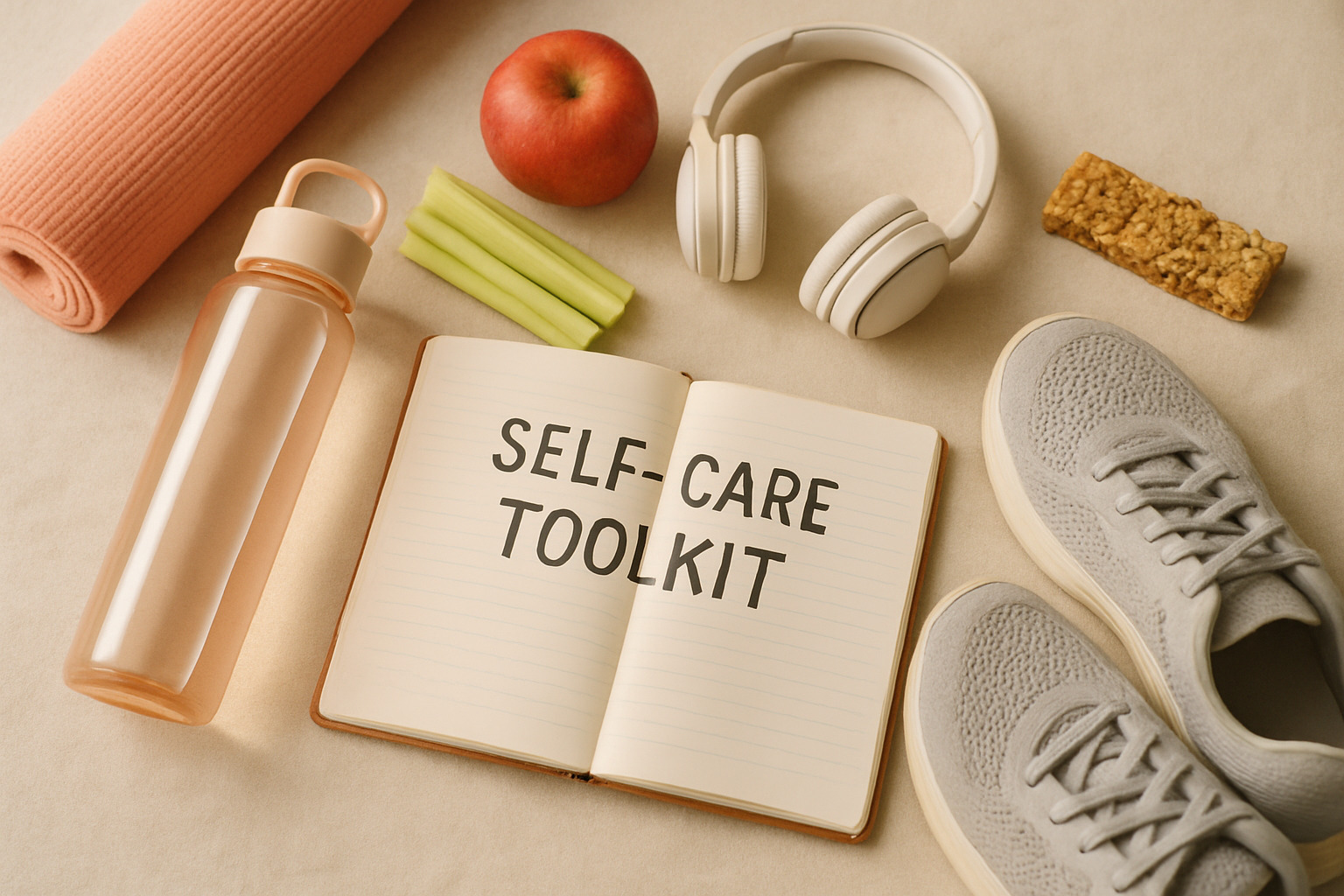
When you truly define mental health as something you can actively nurture, you realize there’s much within your control. Think of mental wellness like tending a garden – it needs consistent care and patience.
Regular exercise – even 45 minutes three to five times weekly – can be as effective as medication for mild to moderate depression. Quality sleep (7-9 hours consistently) forms the foundation, allowing your brain to process emotions and consolidate memories.
Mindfulness and meditation starting with just 10 minutes daily creates noticeable stress-handling improvements. Gratitude practice – writing three daily gratitudes – has been scientifically proven to rewire your brain for positivity.
Social connection remains one of our strongest mental well-being predictors. Quality matters more than quantity. Balanced nutrition affects mood significantly since your gut produces most of your body’s serotonin.
At Beyond Beauty Lab, we believe in the mind-body connection. When you feel good mentally, it shows in your energy, skin, and presence. Our wellness and self-care guide explores this connection further.
Professional support includes traditional therapy like CBT, newer approaches like DBT, medication when brain chemistry needs support, peer support groups, and digital mental health tools.
Individual Strategies to Strengthen the Way You Define Mental Health
Building mental wellness requires consistent, intentional practices. Creating structure and routine gives your mind safety and predictability through regular sleep times, meaningful weekly activities, and realistic goals.
Developing emotional skills starts with noticing and naming emotions throughout the day, then learning healthy expression methods and effective coping strategies.
Nurturing relationships requires intentional investment – practicing active listening, setting healthy boundaries, and seeking support when needed. Finding purpose and meaning can involve volunteering, pursuing joyful hobbies, setting value-aligned goals, and contributing to something larger.
Practicing self-compassion means treating yourself with the kindness you’d show a dear friend, accepting setbacks as human, focusing on progress over perfection, and celebrating small wins.
Community & Workplace Actions
Your mental health isn’t just individual responsibility – communities and workplaces enormously influence well-being.
Workplace mental health standards like CSA Z1003-13 guide psychological health and safety. Healthy workplaces address excessive workload and poor communication, create psychologically safe environments, provide mental health resources, and train managers appropriately.
Community-level support includes school-based SEL programs, anti-bullying initiatives, accessible mental health services, and community centers providing connection. Scientific research on social determinants shows addressing poverty, discrimination, and education access significantly impacts population mental health.
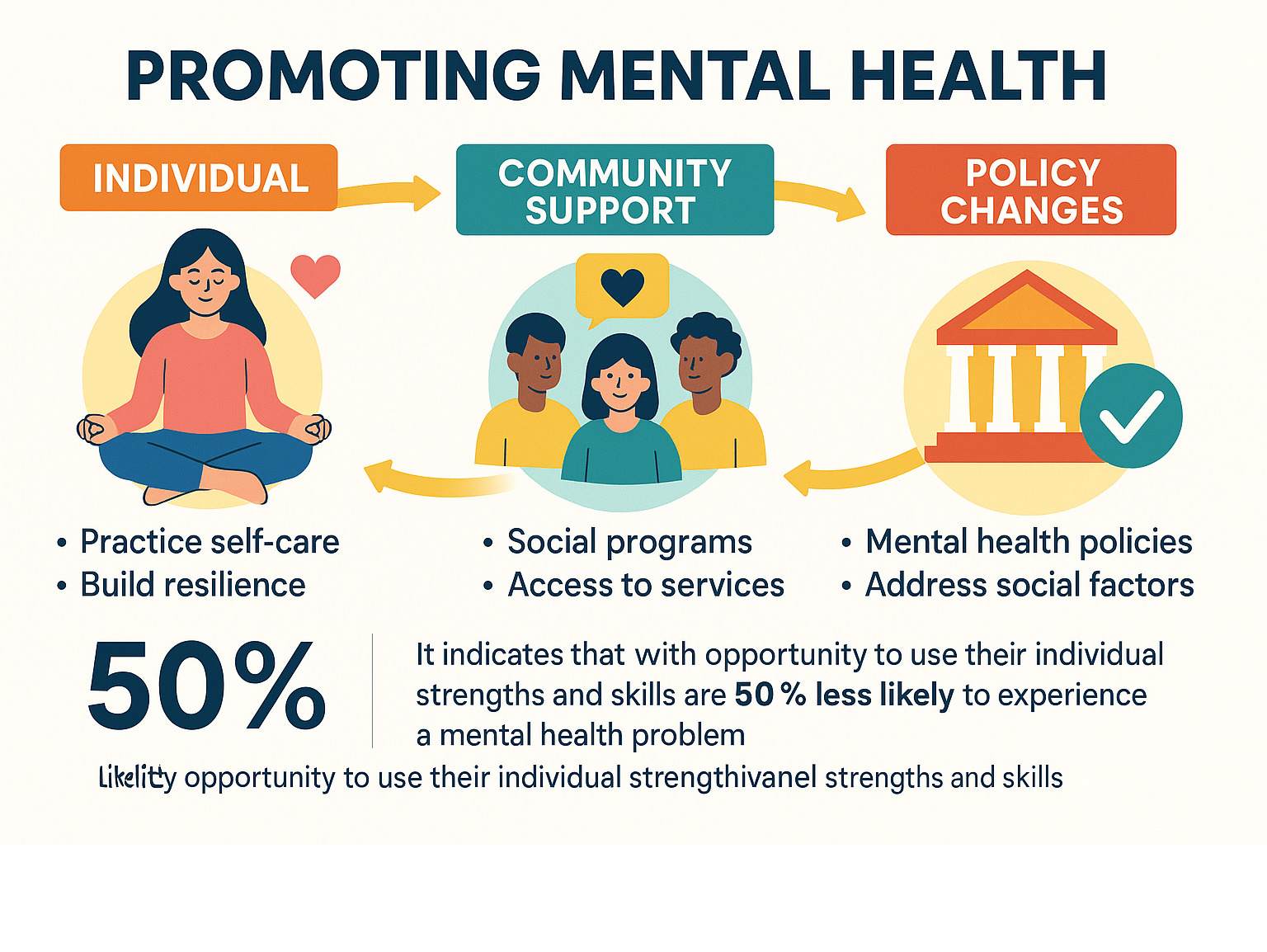
Policy and systemic changes create foundations for success through integrated healthcare systems, insurance coverage, addressing social determinants, suicide prevention strategies, and promoting mental health literacy.
Small actions ripple outward – when you care for your mental wellness, you’re better equipped to support others.
Conclusion & Next Steps
When we properly define mental health, we’re looking at your complete emotional, psychological, and social well-being – your ability to handle stress, build relationships, contribute to community, and reach your full potential.
Mental health exists on a spectrum. Some days you’re thriving, others you might struggle, and sometimes you need extra support. That’s completely normal.
Mental health affects everything – when you nurture your mental well-being, you boost physical health, improve relationships, increase productivity, and improve how you show up in the world.
At Beyond Beauty Lab, we believe true beauty radiates from within. The integration of mind and body wellness is essential. When you feel good mentally, it shows in your energy, skin, confidence, and presence.
Your mental health journey starts with small steps. Honestly assess where you are on the mental health continuum. Choose 2-3 evidence-based practices that feel doable – maybe a daily walk, gratitude journaling, or reconnecting with friends.
Don’t underestimate connection. Strong relationships are among the strongest mental health predictors. Seeking professional help shows strength and self-awareness, not weakness.
Mental health is an ongoing journey, not a destination. Keep learning, growing, and being gentle with yourself. You deserve to thrive and live meaningfully.
Ready to explore how mental wellness connects to overall well-being? Check out The Ultimate Guide to Wellness and Well-Being for a holistic approach bringing together beauty, self-care, and mental health.
Your mental health matters. You matter. Taking steps to understand and care for your mental well-being is one of the most important gifts you can give yourself and everyone who loves you.

